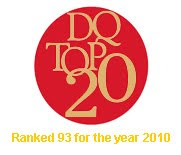 June, 2010
June, 2010: In U.S., the Data Centers accounted for 61 billion kWh or approx 1.5 percent of the Nation’s electricity consumption.
Staggering StatisticsIn U.S., the Data Centers accounted for 61 billion kWh or approx 1.5 percent of the Nation’s electricity consumption. This usage is equivalent to the consumption of approximately 6 million U.S. households with the estimated figure of 12% increase annually according to the study report from the EPA.
The report puts a tremendous responsibility on the IT industry to adopt the Green IT initiatives more seriously and make the IT infrastructure as Eco-Friendly or Energy Efficient.
The EPA reports that energy usage in data centers doubled between 2000 and 2006 and is predicted to double again by 2011, hence the interest in energy efficiency.
Business leaders searching for a green strategy encounter few roadmaps and established rules and plenty of hidden twists and turns.
Emerging StandardsThe Energy Star Version 5.0 standard provides guidance for choosing energy-efficient equipment, including Network devices, PC and Laptops, workstations, small-scale servers, and thin clients. To earn the Energy Star Version 5.0 label, the computing devices must meet the set power consumption criteria.
The IT infrastructure managers and Technology Manufacturers looking for greener alternatives will begin to benefit this year from a major initiative aimed at reducing the power consumed by Ethernet device- IEEE 802.3az, or the Energy-Efficient Ethernet (EEE) standard, will implement low-power idle (LPI) modes for the full range of Ethernet BASE-T transceivers (100Mb, 1GbE and 10GbE) and the backplane physical layer standards (1GbE, 4-lane 1GbE and 10GbE).
The Electronic Product Environmental Assessment Tool (EPEAT) goes further in providing guidance to select environmentally friendly electronic device or equipment. In addition to requiring Energy Star rating, EPEAT registration evaluates computing device based on further criteria including materials selection and composition, life cycle considerations, end-of-life design and management, and packaging. EPEAT registers products at Bronze, Silver, and Gold levels according to how many of the optional criteria they meet on top of the 23 required criteria.
Virtualization and Cloud clean the CarbonVirtualization, cloud computing, data center optimization and legacy modernization are the major focus areas for the IT organizations globally since the economic meltdown.
Cost savings and IT infrastructure consolidation are driving the Green IT agenda at the moment. The shrinking IT budget is also causing IT to reconsider how to run things more cost effectively as we continue to do more with less.
Virtualization clearly offers the promise of better resource utilization and lower operating expense. Energy-Star servers, outside air economizers and the like offer true green advantages.
A recent survey of IT Managers worldwide about their environmental strategies indicates about 54% admitted that cloud computing is now part of their overall environmental strategy. And over 21% of IT managers believe that cloud computing is a much greener alternative to traditional computing infrastructures, but it seems that the vast majority still remain to be convinced.
Green Client Computing Power SaviorThe benefits of efficient Client Computing through desktop virtualization and print management creates significant impact on the energy. Longer PC lifecycles and more efficient power usage are other desktop virtualization benefits.
Hosted virtual desktops continue to garner significant market attention. Organizations considering their deployment can minimize cost and risks by following implementation best practices outlined by the industry experts. Desktop Virtualization technology will help in extending the lifetime of the Desktops by stretching the PC refresh cycle to reduce the load on already overtaxed landfills. Avoid sending hazardous materials to those landfills, old systems and supplies can be reused, repurposed, and/or recycled.
Green Client Computing is a combination of strategies and initiatives that reduce the environmental footprint of IT infrastructure. This arises from reductions in energy use and consumables, including hardware, power, and paper and extending the equipments lifetime among others. Because of these reductions, Green IT initiatives also produce cost savings in energy use, purchases, management and support, in addition to environmental benefits. Beyond cost savings and environmental benefits, some initiatives may address stakeholder and regulatory needs and demands.
Green JourneyGreen computing is a continuous journey and everyone is responsible to play their role to make computing greener with the optimized energy usage to operate the electronic devices and mushrooming professional gadgets at work place. Such practices include the implementation of energy-efficient Servers and Accessories or Peripherals as well as reduced resource consumption and proper disposal of electronic waste (e-waste).
Green IT is taking on a bigger role for many reasons, including an increased awareness of environmental danger; concern about power bills; regulatory requirements; government procurement rules; and a sense that corporations should embrace social responsibility.
Since IT is still responsible for 2% of all carbon releases, IT managers should put best practices in place to
- Optimize the Power usage with the proper Power Management software
- Actively manage the desktop or laptop power settings
- Modernize the Data Center by Virtualizing the Servers, Desktops and Applications
- Mandate the purchase of energy efficient computing devices
- Establishes energy measurement and take the responsibility to monitor the energy usage
- Remember to Reduce ... Reuse ...Recycle...
The author is Executive Vice-President, Business Development, Zylog Systems
Read the article online at: http://www.thesmarttechie.com/magazine/fullstory.php/DNGF996515828
































